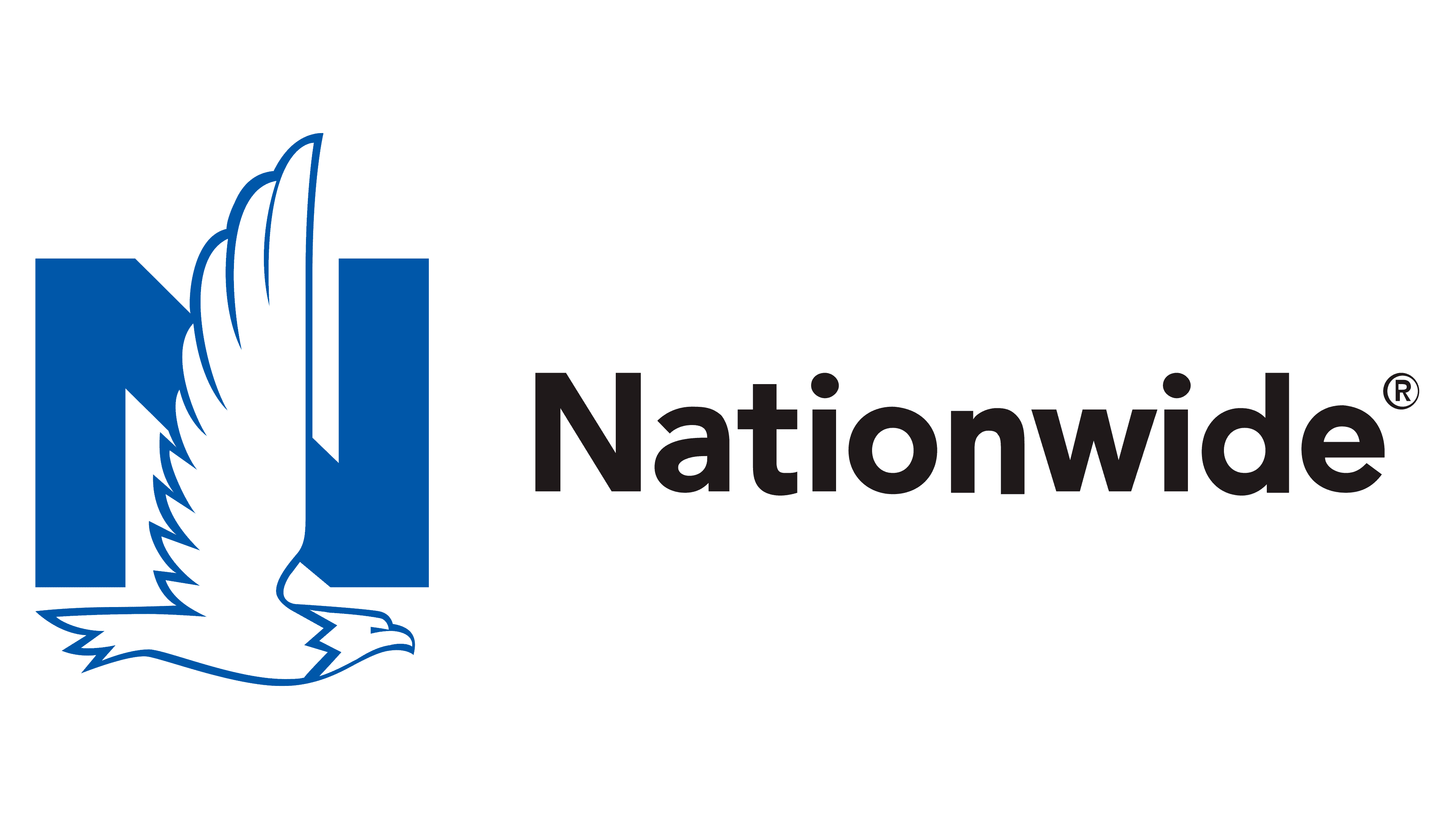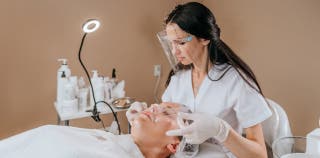- Product liability insurance coverage is offered as an inclusion within your main general liability insurance policy.
- Product liability insurance covers bodily injury, property damage, illness, and wrongful death resulting from defective products you’ve sold.
- All businesses that make, sell or repair products should consider taking out a general liability policy that includes product liability coverage.
- On average, small businesses pay around $42 per month for product liability insurance. However, several factors like the size of the policy, industry risk, and the business location can influence the price.
- It’s important to note that product liability insurance only covers third parties, and it will not cover employee injuries resulting from products in the workplace. For this, consider adding workers’ comp insurance.
- Using an online quote tool is the quickest and easiest way to get matched to the right insurance plans for your business.
Best Product Liability Insurance for 2024
*Applies to quotes made through Insureon only. Average monthly premium calculations are estimates and may vary by state, insurance provider, and the nature of your business. Where required or allowed by state law, insurance taxes, service fees, and other surcharges may be included and billed separately from the premium.
On This Page
- Key takeaways
- Our recommendations for product liability insurance
- Who needs product liability insurance?
- What does product liability insurance cover?
- What isn’t covered by product liability insurance?
- Is product liability insurance necessary?
- The cost of a product liability lawsuit
- How much does product liability insurance cost?
- Product Liability Insurance FAQs
- Related topics
On This Page
- Key takeaways
- Our recommendations for product liability insurance
- Who needs product liability insurance?
- What does product liability insurance cover?
- What isn’t covered by product liability insurance?
- Is product liability insurance necessary?
- The cost of a product liability lawsuit
- How much does product liability insurance cost?
- Product Liability Insurance FAQs
- Related topics
Product liability insurance protects business owners in the event that a product they make, sell, distribute, or repair causes injury to a person or someone’s property.
Most general liability insurance policies include product liability coverage which can save your business legal fees and expensive payouts if one of your products causes injury or property damage.
Our top picks for the best product liability insurance
- The Hartford: General Liability (Product Liability) - Professional Liability - Workers’ Comp - Sole Proprietors - BOP - Commerical Auto - Fidelity Bond
- Acuity: General Liability (Product Liability) - Workers’ Comp - Sole Proprietors - BOP - Commerical Auto
- Liberty Mutual: General Liability (Product Liability) - Workers’ Comp - Sole Proprietors - BOP - Commerical Auto
- Hiscox Insurance: General Liability (Product Liability) - Professional Liability - BOP
- Nationwide: General Liability (Product Liability) - Workers’ Comp - Sole Proprietors - BOP
Our recommendations for product liability insurance
Who needs product liability insurance?
All businesses that make, sell, distribute, or repair products should consider taking out a general liability insurance plan that includes product liability coverage. This includes:
- Manufacturers & distributors
- Retailers & e-commerce businesses
- Wholesale businesses
- Product repair businesses
These are the companies most likely to be liable for damage caused by a faulty product.
While product liability insurance isn’t mandated by law, it is highly risky to sell products without this type of insurance policy in place. If you manufacture, sell, distribute or repair products you should consider having it as a basic protection
Companies in this field of work may also be required to have product liability insurance as part of certain business negotiations or contracts.
What does product liability insurance cover?
Product liability insurance covers damages and costs related to lawsuits brought by third parties due to property damage, bodily injury, illness, death as a result of your product.
Product liability insurance can bear the brunt of paying for:
- Replacing damaged property
- Medical expenses for injured parties
- Lost wages for injured parties
- Legal defense fees
- Compensatory or punitive damages
It’s important to note that the above are only covered if they occur as a result of your product.
Below, we cover the types of errors your products may have that can be covered by product liability insurance.
 GET PRICES
GET PRICES
What are the three major types of product liability?
There are 3 main areas of product risk and liability:
- Product design defects
- Product manufacturing defects
- Product marketing defects
Product liability insurance can cover these scenarios, so customers get the compensation they deserve and your livelihood isn’t compromised as a result of a claim.
To understand each of these better, let’s imagine the following examples:
Design defects
With a design defect, the product was designed incorrectly from the beginning, and that flaw has caused injury or damage. An example of this might be a bike that had tires clipped to the frame using the wrong kind of screw. The screw couldn’t handle the tension of the ride or the weight of the rider, and as the bike came apart, the customer fell and broke their ankle. You’re liable because of the design flaw. Luckily, the right product liability coverage should take care of medical fees and other costs, like compensation for time missed at work.
Manufacturing defects
The flaw here isn’t in how a product was designed, but in how it was made. In this example, the bike from above had the right screws, but those screws were only tightened halfway during the assembly process. They should’ve held up just fine, but because someone did only half their job, the customer was injured during what should’ve been a pleasant afternoon ride. Once again, you’ve been notified of a product liability lawsuit, and it’s up to your liability insurance to pay out for medical costs and other reparations.
Marketing mistakes
Now imagine the bike was designed perfectly and made to the exact specifications given. But when your company started advertising the bike, your marketing team made an unfortunate mistake. The commercial showed an actor doing backflips off the bike and even riding the two-wheeler off a diving board and into a pool. Your legal advisors forgot to add the disclaimer at the bottom of the ad, and someone attempted a similar backflip in their aunt and uncle’s backyard. Luckily, the rider is okay, but they smashed through the side of their Aunt Annie’s very pricey greenhouse. Your marketing suggested bike acrobatics might be a reasonable activity, and now you’re liable for property damage. Liability insurance would theoretically pay for a new greenhouse or repairs to the old one.
What isn’t covered by product liability insurance?
Product liability insurance is primarily focused on losses associated with defects. It does not cover damages related to:
- Costs you incur due to product recalls and other inventory losses (see commercial property, BPP, or inland marine)
- Work-related injuries suffered by an employee (see workers’ comp)
- Customer injuries that occurred on your commercial property (see general liability)
It’s vital you supplement product liability coverage with other policies offered by trusted insurance companies, such as workers’ compensation insurance and general liability insurance.
Is product liability insurance necessary?
Yes, if you manufacture, sell, distribute, or repair products, you should have product liability insurance as a basic coverage for your business as product liability lawsuits can be extremely expensive.
This is true even for micro enterprises like a small home-based business that sells a couple hundred dollars worth of kiddie accessories each month.
Apart from the high cost of lawsuits, there are also many different types of claims that can be made as grounds for a product liability lawsuit making your risk even higher.
Here are examples of some of the damages people can claim from defective products:
- Compensation for property damage caused by the defective product
- Compensation for medical bills resulting from a defective product
- Compensation for lost wages due to injuries from defective products
- Compensatory court damages (payout) for pain or suffering caused by injuries from a defective product
Without product liability coverage you run the risk of having to pay huge financial losses out of pocket.
The cost of a product liability lawsuit
Data published by Thomson Reuters in Current Award Trends in Personal Injury, 61st edition shows that the median payouts awarded by juries in product liability lawsuits was over $7 million in 2020.
Have a look at following table that shows the median and average damages awarded by juries in Product liability Lawsuits in 2020.
Jury-awarded Personal Injury Damages for Product Liability Lawsuits in 2020
| Payout Statistics | Dollar Amount |
|---|---|
| Average payout | $7,058,106 |
| Median payout | $3,908,111 |
Apart from payouts relating to settlements or damages, defense costs alone can be well over half a million dollars for product liability lawsuits. Data from the National Association of Insurance Commissioners shows that in 2022, the cost for legal defense & cost containment services was nearly $750,000 for product liability lawsuits.
Note: Cost containment services relate to negotiating settlements, mediation, and more.
The following table shows the cost of legal defenses and cost containment services for product liability lawsuits from 2020 to 2022.
Defense & Cost Containment Expenses for Product Liability Lawsuits 2020-2022
| Year | Defense Costs for Product Liability Lawsuits | Defense costs as percent of total losses |
|---|---|---|
| 2022 | $748,723 | 45.60% |
| 2021 | $712,979 | 46.60% |
| 2020 | $667,390 | 60.90% |
Source: NAIC and S&P Global Market Intelligence
Based on this information, it quickly becomes clear that product liability coverage is imperative for any business that sells, manufactures, distributes, or repairs products. The good news is that this type of coverage is usually included as part of your general liability insurance. So, it’s quite easy to get the coverage you need.
How much does product liability insurance cost?
Based on sales data from Insureon, product liability insurance typically costs around $42 per month on average when purchased as part of a general liability insurance plan.
That said, product liability insurance can often be found for even cheaper.
General liability insurance + product liability coverage starts as low as $21 per month*
*Applies to quotes made through Insureon only. Average monthly premium calculations are estimates and may vary by state, insurance provider, and the nature of your business. Where required or allowed by state law, insurance taxes, service fees, and other surcharges may be included and billed separately from the premium.
The total cost of product liability insurance depends on several factors, including your industry, geographic location, claims history, and how much coverage you’re interested in getting. Generally, the riskier your industry is, and the more coverage you want, the higher your premiums will be.
Product liability coverage is often rolled into general liability coverage. When purchased from leading insurance companies, those policies typically average out to about $42 per month or $500 out of pocket annually for standard coverage for a small business.
Try using a product liability calculator tool to see exactly how much it could cost your business.
 GET PRICES
GET PRICES
Product Liability Insurance FAQs
Is product liability insurance worth it?
Product liability insurance coverage is definitely worth the investment, as your policy could be the only thing standing between your business and financial disaster. Having a policy in place protects you in the event of a lawsuit and gives proper compensation to a customer who has suffered bodily injury or experienced property damage due to a covered product defect.
What is the difference between product liability and professional liability insurance?
Product liability coverage deals with damage caused by a product defect, while professional liability insurance deals with third-party claims related to losses caused by human errors in your work. An example of the latter would be a general contractor who accidentally wrote “bathroom reno” instead of “bedroom reno” on subcontractor paperwork, resulting in thousands of dollars in unwanted construction.
Note that product liability insurance and professional liability insurance are not the same thing, but certain specialized professional liability (E&O) policies may cover some of the same scenarios covered by product liability insurance.
For instance, specialized manufacturers E&O will pay for manufacturing defects that cause a product to hurt someone or destroy property. However, this type of coverage may not be available for other types of businesses.
What is an example of a product liability risk?
One example of product liability risk is a design defect that compromises your product from the get-go. Other risks, like marketing and manufacturing defects, can also make you liable for an injury or property damage that occurs once the product is in the consumers’ hands.
What are the consequences of product liability?
Without the protection of a product liability insurance policy, you and your business could be solely responsible for paying off everything from medical bills belonging to the injured party to repairs necessary to fix damage to someone’s home. In addition to monetary losses associated with lawsuits (even frivolous ones), claims could also damage your reputation.
What is the most common product liability claim?
A review of product liability cases shows that the most common product liability claim is related to manufacturing defects. These claims allege that the product in question was designed properly but made incorrectly and that the mistake caused significant harm. However, it’s important to note that product liability insurance can cover many other types of claims as well.

































